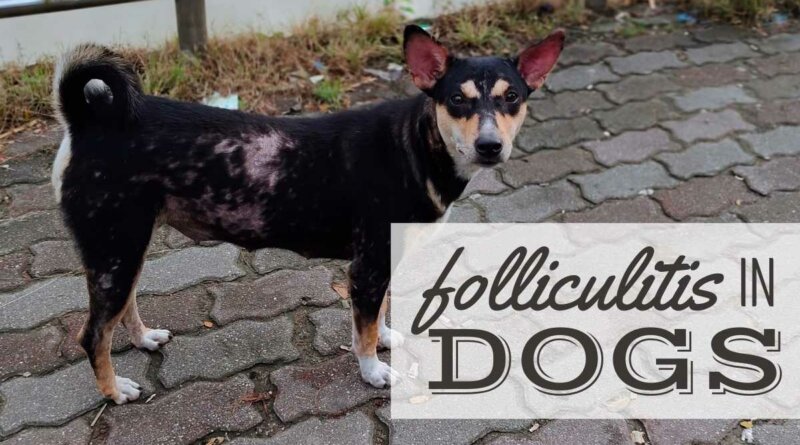Folliculitis In Dogs: Symptoms, Treatment & Prevention
To keep the lights on, we receive affiliate commissions via some of our links. Our review process.
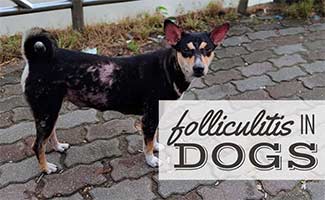
Folliculitis is a common skin condition in dogs. Folliculitis means ‘inflammation of the hair follicle,’ and it has a variety of causes, most of which require veterinary treatment. Inflammation of the hair follicle can lead to swelling, redness, itchiness, and pain. This article will explore what causes folliculitis, how to spot the signs of it, and how to get rid of folliculitis in dogs to get your pup itch-free and back to full health faster.
What Causes Folliculitis In Dogs?
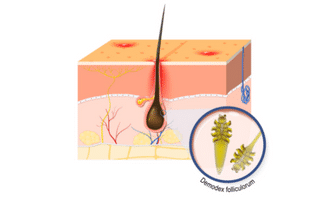
Folliculitis is the inflammation of a hair follicle typically related to a bacterial infection or bacterial overgrowth. It may also be referred to as superficial bacterial folliculitis or pyoderma folliculitis in dogs, especially when associated with a more widespread skin infection.
Hair follicles are tiny openings in the skin through which hair grows. Each follicle contains glands that secrete oils to keep your dog’s coat healthy. Your dog’s skin is covered in hundreds of thousands of individual hair follicles, and they each contain a unique population of bacteria and yeast that live on the skin all the time and help keep it healthy. If the hair follicle becomes inflamed, this population of bacteria can become unbalanced, and the hair follicle will become infected, resulting in folliculitis.
While bacteria commonly cause folliculitis, there are several underlying causes that trigger this bacterial overgrowth:
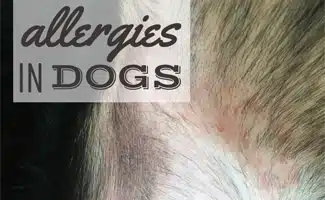
- Allergies – Allergies (or intolerances) to certain foods, grasses, pollens, or parasites (such as fleas) mean your dog’s immune system overreacts to common allergens your dog’s skin is exposed to. This creates inflammation within the skin and hair follicle and can lead to bacterial folliculitis.
- Parasites – Fleas, ticks, mange mites, ear mites, and lice can all live on your dog’s skin, causing an infestation resulting in irritation and eventual inflammation, triggering bacterial overgrowth in and around the hair follicle.
- Trauma – Excessive scratching or friction caused by skin folds rubbing together, such as in the groin or armpits, damages the top layer of the skin and the normal defense mechanisms of the skin. This can result in inflammation and folliculitis. Infections are more likely to occur in areas where moisture gets trapped in the skin, such as skin folds on the face or abdomen.
- Hormone Disorders – Hormone imbalances such as hypothyroidism (underactive thyroid gland) or Cushing’s disease (an excess of cortisol hormone in the body) can weaken your dog’s immune system and lead to bacterial overgrowth on the skin.
- Follicular Dysplasia – Follicular Dysplasia in dogs is caused by an abnormality in the hair follicle. Several types of follicular dysplasia exist, most of which are genetic and result in hair loss and an abnormal structure of the hair follicle that is more susceptible to bacterial overgrowth.
What Does Folliculitis Look Like On Dogs
Folliculitis may develop in a small area of skin and then spread to a broader scope, sometimes covering the whole dog’s body. Folliculitis starts as a small, raised, red lump on the skin around a hair follicle. These are called papules and have a similar appearance to acne in people.
If secondary infection occurs, this papule may fill with pus and form a whitehead or pustule. Eventually, pustules burst open, resulting in a crusty, flaky lesion around the hair follicle called an epidermal collarette. If the skin around the hair follicles has been inflamed for some time, it may appear red, thickened (like the appearance of an elephant’s skin), or become darker or hyperpigmented.
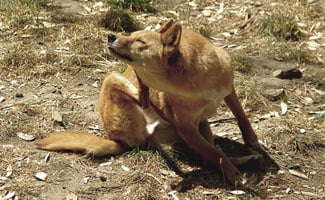
Signs of folliculitis in dogs may include:
- Redness
- Itching
- Swelling
- Hair loss (alopecia)
- Pigmentation
- Raised, red lumps or pus-filled lumps on the skin
- Flaking or crusting of the skin
Can Dogs Get Ingrown Hairs?
Yes. An ingrown hair is when the hair shaft grows in the wrong direction out of the hair follicle, causing the hair to keep growing but becoming trapped beneath the skin. A dog ingrown hair or an ingrown dog whisker most commonly occurs after clipping or grooming. They look like small, red, inflamed lumps on the skin and may appear on the body, paws, or between your dog’s toes.
They may be painful or itchy, particularly if the hair follicle expands with fluid or pus and results in an ingrown hair cyst in your dog. Some breeds of dogs are more prone to ingrown hairs, such as the Chinese Shar-Pei and Poodles. A dog ingrown hair cyst shouldn’t be squeezed or picked, instead, use a hot compress such as a towel or cotton wool soaked in warm water to open the cyst and draw the material out gently.
Diagnosing Folliculitis In Dogs
If you’re concerned your dog has folliculitis or another skin condition, it’s best to seek veterinary advice. A veterinary surgeon will examine your dog’s skin and take a history of possible allergic triggers or changes to your dog’s normal routine to look for causes of your dog’s folliculitis. Sometimes, further testing is necessary, particularly if your dog has recurring folliculitis or if it’s not resolved with treatment. Further diagnostic tests might include taking a sample of the skin to examine under a microscope, testing for parasites such as mites, taking a swab for bacterial culture, and blood tests to assess organ function and hormone levels.
How To Treat Folliculitis In Dogs
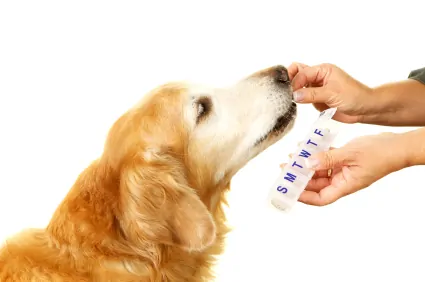
Once your veterinarian has diagnosed folliculitis, they may prescribe a combination of treatments to treat the folliculitis. Treatment typically involves a combination of systemic medication (administered orally or by injection) and topical medications such as shampoos, ointments, creams, and sprays.
Bacterial folliculitis may be treated with a course of oral antibiotics or antibacterial agents that are found in medicated shampoos or washes. Parasitic infections require medication to kill the parasites.
Supportive care is often needed to reduce itch and inflammation in the skin and promote healing. If an underlying cause for the folliculitis is suspected, such as a skin allergy, then this may require ongoing management or avoiding the allergen (such as specific exclusion diets in the case of food allergies).
Folliculitis In Dogs Home Treatment
You can make a couple of changes in your dog’s daily routine to help prevent folliculitis. It’s essential to stay up to date on flea and tick prevention to avoid parasitic infections that could irritate their skin. Supplements such as Omega 3 and essential fatty acids (EFAs) can help reduce inflammation and improve the skin’s natural oil barrier. Vitamin E, A, and B3 are essential to maintaining a healthy coat and skin.
Diet can be an important factor in helping prevent skin disease in dogs. Ensuring your dog has a healthy, balanced diet is essential in helping to prevent skin infections such as folliculitis.
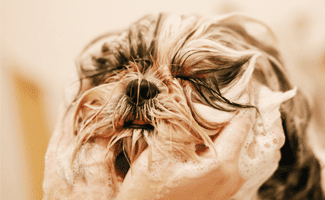
Bathing can be a huge help when treating your canine’s folliculitis. However, there’s a huge range of medicated shampoos on the market, and choosing the right one for the job can be challenging. If in doubt, seek veterinary advice. A topical shampoo needs to remove the right number of bacteria and yeast and moisturize the skin but not strip the coat of too many of its natural oils.
- Calendula extract is a topical liquid with antibacterial properties.
- Vitamin E is an effective moisturizer administered orally or directly onto the skin.
- Tea tree oil works as an antiseptic to reduce bacterial populations on the skin and clean off allergens. However, it can dry and irritate already inflamed skin.
- Apple cider vinegar for folliculitis in dogs has been long recommended as a home remedy as it has natural antibacterial properties and reduces inflammation. It shouldn’t be applied directly to red or broken skin.
- Oatmeal and aloe vera-based shampoos are helpful as they have skin-soothing properties and reduce itching.
Identifying Underlying Conditions
It’s important to be aware that folliculitis is nearly always a secondary infection arising from different underlying triggers or skin diseases. It will likely keep recurring unless the underlying problem is sorted out.
While there are many remedies you can try at home to help provide relief for your itchy canine friend, for a lasting cure, it’s advised to seek veterinary advice to diagnose and treat the primary condition. If you notice your pup is itching or scratching more than usual or has a rash or sore skin, don’t delay getting them treated. Also, if you haven’t already considered pet insurance, it can help save you money on vet expenses for diagnosis and treatment of this and other skin conditions in dogs.
Tagged With: Skin

